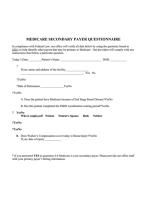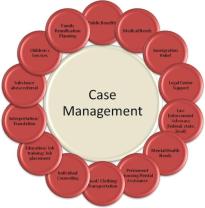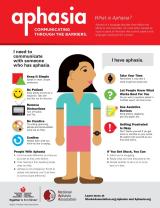What information should the facility provide the patient or prospective patient?
In healthcare, ensuring transparency and providing patients with necessary information is crucial for building trust, promoting patient-centered care, and meeting ethical and legal standards. Here are key pieces of information that a healthcare facility should provide to patients or prospective patients:
Contact Information:
- Clearly display contact information for the facility, including phone numbers, email addresses, and physical addresses. This helps patients reach out for appointments, inquiries, or emergencies.
Services Offered:
- Clearly outline the range of services and medical specialties offered by the facility. This information helps patients understand the scope of care available.
Healthcare Providers:
- Provide information about healthcare providers, including their names, credentials, specialties, and contact details. This helps patients make informed decisions about their choice of healthcare professionals.
Financial Information:
- Clearly communicate information about billing and financial policies. This includes details about accepted insurance plans, out-of-pocket costs, payment methods, and any financial assistance programs available.
Patient Rights and Responsibilities:
- Share information about patient rights and responsibilities, including privacy rights, consent procedures, and expectations for patient behavior within the facility.
Privacy Practices:
- Provide information about the facility's privacy practices, in compliance with healthcare privacy regulations such as the Health Insurance Portability and Accountability Act (HIPAA). Patients should be aware of how their health information will be used and protected.
Appointment Scheduling:
- Clearly explain the process for scheduling appointments, including how to schedule, reschedule, or cancel appointments. This information should be easily accessible to patients.
Wait Times:
- If possible, provide information on average wait times for appointments and in waiting rooms. Transparency about wait times helps manage patient expectations.
Clinical Outcomes and Quality Data:
- Share relevant clinical outcomes and quality data about the facility's performance. This information can contribute to patient confidence in the quality of care provided.
Patient Education Materials:
- Offer educational materials that empower patients to understand their conditions, treatment options, and preventive measures. This can include pamphlets, brochures, and online resources.
Complaint and Grievance Procedures:
- Clearly outline the procedures for patients to file complaints or grievances. This information should include contact details for the appropriate channels within the facility and external agencies.
Accessibility Information:
- Provide information about the facility's accessibility features, accommodation options for individuals with disabilities, and language assistance services for those with limited English proficiency.
Ensuring that patients have access to comprehensive and easily understandable information promotes a positive patient experience, supports shared decision-making, and aligns with principles of patient-centered care. It's essential for healthcare facilities to regularly review and update this information to maintain transparency and compliance with regulations.
What essential information should a healthcare facility provide to patients or potential patients?
To promote informed decision-making and create a positive patient experience, healthcare facilities need to provide clear and accessible information to their patients and potential patients. Here's a breakdown of essential information they should provide:
General Information:
- Facility name and contact information: Address, phone number, website, email address, and social media handles.
- Hours of operation: Including appointment scheduling hours and any holiday closures.
- Services offered: A comprehensive list of medical services provided by the facility, including specialized services and departments.
- Insurance accepted: Information on accepted insurance plans and out-of-pocket costs.
- Billing and payment options: Explanation of billing procedures, accepted payment methods, and financial assistance programs.
- Accessibility information: Details about accessible parking, entrances, restrooms, and services for patients with disabilities.
- Patient rights and responsibilities: Information about patients' rights to privacy, confidentiality, informed consent, access to medical records, and complaint procedures.
Patient-Specific Information:
- Provider qualifications: Information about the healthcare providers, including their credentials, experience, and areas of expertise.
- Treatment options and risks: Clear explanations of available treatment options, their potential benefits and risks, and alternative options if available.
- Estimated costs: Information about expected costs for specific procedures, tests, and medications.
- Pre- and post-procedure instructions: Detailed instructions on preparing for and recovering from procedures or surgeries.
- Medication information: Clear instructions on medication dosages, side effects, and interactions with other medications.
- Emergency contact information: Information on who to contact in case of a medical emergency.
- Patient education materials: Brochures, leaflets, videos, or online resources providing information about specific health conditions, treatments, and preventive care.
Transparency and Communication:
- Quality of care data: Information about the facility's performance metrics, such as patient satisfaction surveys, infection rates, and readmission rates.
- Safety and infection control policies: Explanation of the facility's policies and procedures for ensuring patient safety and preventing infections.
- Complaint resolution process: Clear instructions on how to raise concerns or file complaints about the facility or its staff.
- Feedback mechanisms: Online surveys, suggestion boxes, or other channels for patients to provide feedback on their experience.
By providing this essential information in a clear, concise, and accessible format, healthcare facilities can empower patients to make informed decisions about their care, improve patient satisfaction, and build trust with their community.
It's important to note that the specific information needs may vary depending on the type of healthcare facility, the patient population served, and individual circumstances.
Here are some additional tips for providing effective patient information:
- Use plain language and avoid jargon.
- Offer information in multiple formats, including written materials, videos, and audio recordings.
- Make sure information is translated into languages spoken by a significant portion of the patient population.
- Provide opportunities for patients to ask questions and clarify any concerns.
- Regularly update information to reflect changes in policies, procedures, and technology.
By being proactive in providing clear and accessible information, healthcare facilities can contribute to a more informed and empowered patient population and enhance the overall patient experience.













